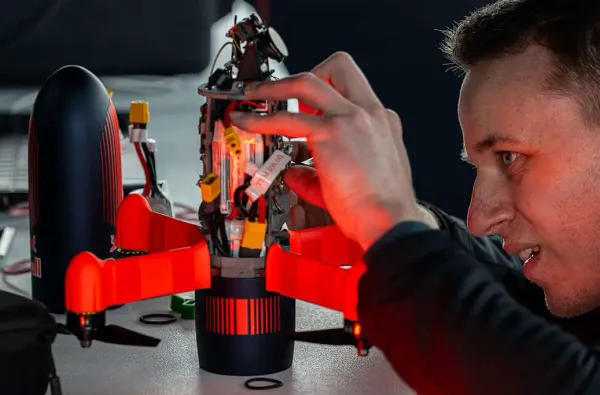Have you ever wondered where the best place is to mount a GPS module on your quadcopter frame? Well, you're not alone! Many pilots struggle to find the optimal GPS placement that will provide accurate positioning without interference. In a this video, FPV expert Pawle shares his insights on GPS module installation.
Keep the Antenna Clear for Best Reception
One of the first things to keep in mind is avoiding obstacles above the GPS module. The ceramic patch on these units is actually the antenna, so covering it with materials like carbon fiber can significantly degrade signal reception. You'll want to mount the module so the antenna has a clear view of the sky for locking onto satellites. Even things such as foam (in the case for FPV planes) can have a negative impact on GPS performance.
Stay Far from Sources of Electrical Noise
Another key factor is reducing electromagnetic interference from other electrical components on your quad. For example, mounting the GPS module near an HD camera or video transmitter can allow RF noise to bleed over and actually block the unit from getting a position fix! Keeping a good distance from noise sources like motors, ESCs, batteries, and cameras is advised.
Watch Out for Magnetic Interference Too
If your GPS module includes a magnetometer for better heading accuracy, then magnetic interference also becomes a concern. Materials like motors, batteries, and power wires all generate magnetic fields that can throw off magnetometer readings. Most experts recommend at least a 5 cm gap between the GPS/magnetompoint butther quadcopter components to avoid interference.
The Rear Center Position is Ideal
Given the need to avoid blocking the antenna and reduce electromagnetic and magnetic interference, the rear center of the quadcopter frame emerges as the ideal mounting spot in most builds. Here, the GPS module can be protected in a rear 3D printed or custom plate, keeping it far from noise sources. Motors, arms, and propellers will also help shield it in the event of a crash.
Adjust Based on Your Build
You may need to tweak the recommended rear-center positioning based on your specific components. If you have a rear-mounted VTX antenna for example, slide it down to provide enough clearance to the GPS above. But in general, keeping the module centralized in the back through some sort of rear plate mount will provide the best results.
Community Tips for Optimal GPS Positioning
The FPV experts in the community also provided some great tips for getting the best navigation performance from your GPS module based on their experiences.
- Shielding the GPS antenna from noise using some self-adhesive aluminum foil underneath it. This allowed them to mount it directly above a HD camera that normally blocked the signal.
- Keep the GPS unit on the rear arms rather than the center rear. This still keeps it away from interference while allowing access to mount HD cameras in the back. Quick satellite locks were reported with this positioning. However, when doing this please make sure your ESC wires are on the other side of the arm (to avoid any interference). The big downside of this approach is that in a crash your props can flex and end up hitting your GPS module, causing some damage, or worse shooting it off to never be found again.
- Some pilots have successfully mounted their GPS module right on top of a GoPro mount. The key is to tightly twist and shield the wires leading to the unit. Just watch out for wire fatigue over time.
- Don't forget the battery lead wires can also interfere with compass readings. So keep some distance from these as well.
- When it comes to antenna placement, separating GPS module from your RX antennas as much as possible helps.
There are lots of innovative mounting solutions out there. Taking the time to tes various positions and shielding methods can help dial in interference-free navigation for your build. The rear is a great starting point, but remain open to tweaks for your specific components and build. If you have a great mounting position share it in the comments below!







